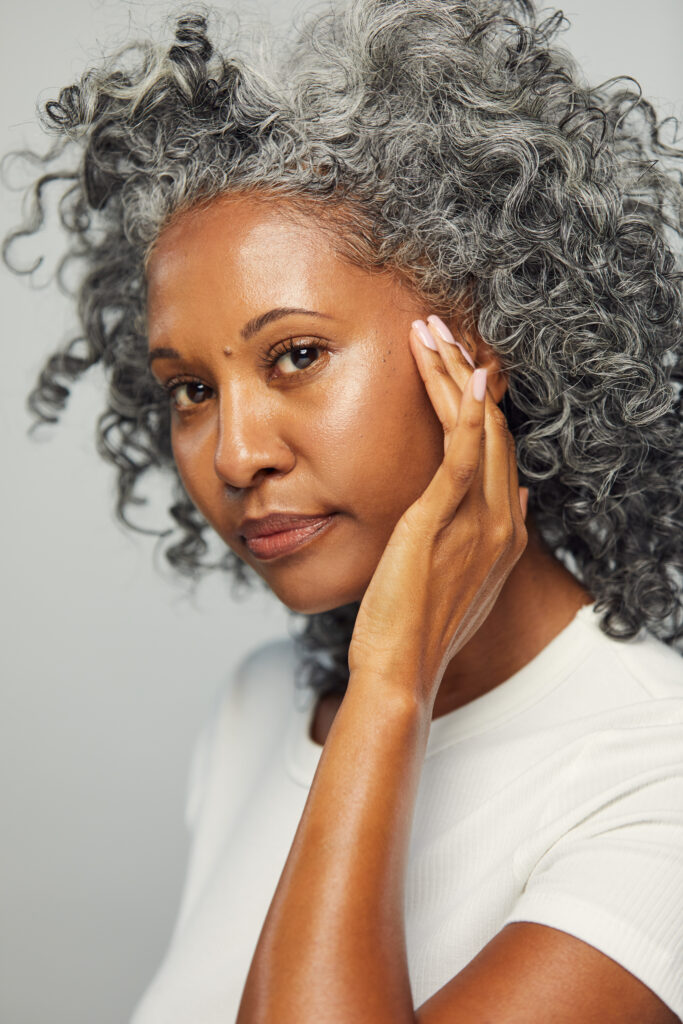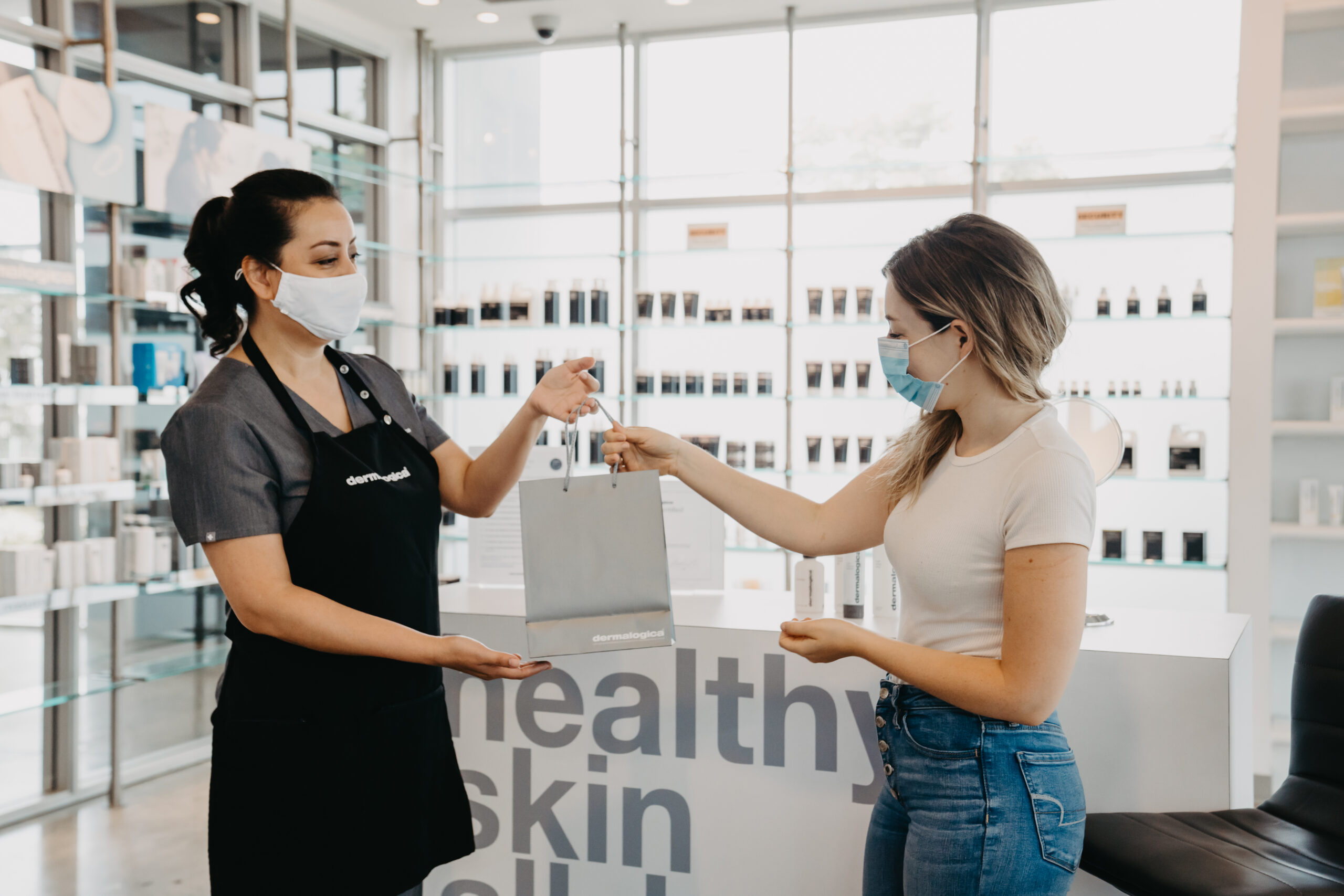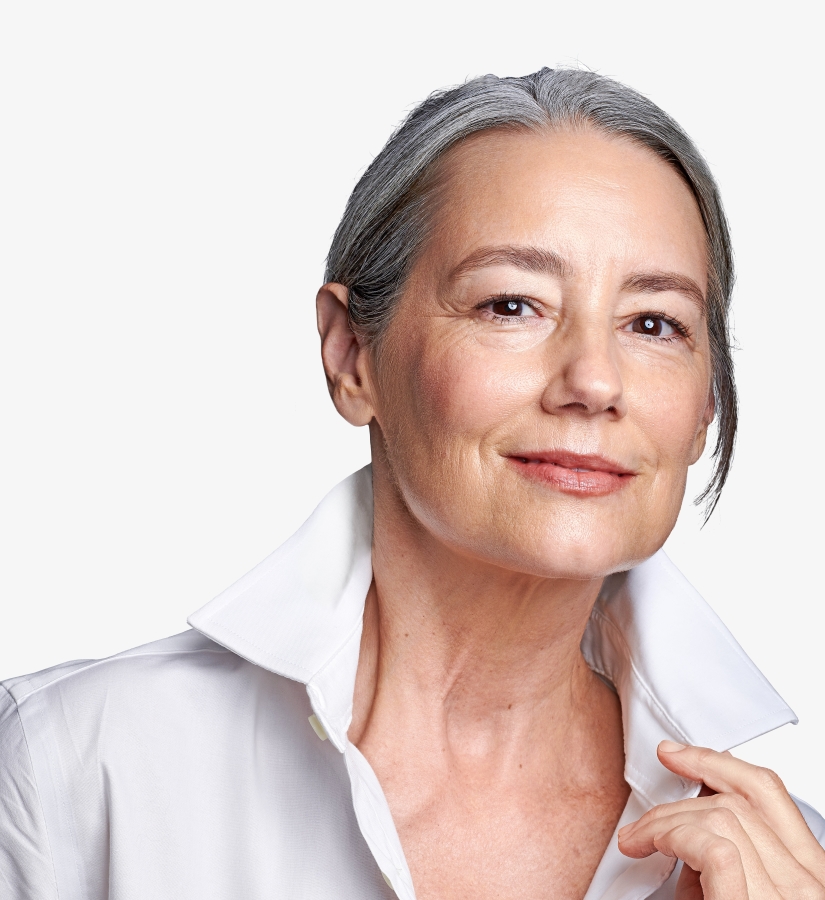
Scientists have performed extensive research to track the changes that occur during skin aging and understand what we can realistically do for this pre-existing condition. In the past, scientists have focused on treating just the manifestations of skin aging (wrinkles, hyperpigmentation, loss of elasticity, etc.). But we now know that biochemical reactions, including the generation of Reactive Oxygen Species (ROS), Matrix Metalloproteinases (MMPs) and Advanced Glycation End-products (AGEs) are responsible for the aging skin condition. With this newfound knowledge, we can now focus our efforts on how to impact these biochemical reactions that manifest age-related changes to stop them before they start.
Antioxidants to Fight Reactive Oxygen Species (ROS) Damage
Normally, the body can handle free radicals with the use of antioxidants. Antioxidants include vitamins (such as Ascorbic Acid [Vitamin C] and Tocopherol [Vitamin E]), enzymes (such as Superoxide Dismutase, Catalase and Peroxidase) and even proteins that can be found naturally in the body or ingested as part of our diet. If, however, antioxidants are in short supply, or if the free radical damage is excessive, damage to the cells and tissue will occur.
While ingesting antioxidants can effectively scavenge Reactive Oxygen Species (ROS), skin is often the last to get its ration of antioxidants. That is when topically-applied cosmetic products come into play. Scientists have been studying an entire arsenal of plant antioxidants that, when applied topically, can help us fight free radicals and protect our skin. Studies have shown that topical application of antioxidants diminishes the severity of UVA-induced dermatoses and raises the amount of UVA radiation required to evoke immediate pigment darkening to the skin. Recent studies from the University of Illinois have demonstrated how Ascorbic Acid (Vitamin C) and Tocopherol (Vitamin E) are critical for use with sunscreens to protect skin from ROS. Because oxidative stress plays a key role in the biological events leading to skin aging, the use of topically-applied antioxidants helps prevent future damage by trapping ROS and quenching them before they damage our cells.
Inhibiting MMPs
Exposure to ultraviolet (UV) radiation is a key factor in stimulating MMP activity. While natural MMP inhibitors exist in the skin, they decline with age. Topical agents such as retinoids may inhibit MMPs, deeming retinoids, including Retinol (Vitamin A) and its derivatives, excellent choices for reversing the signs of photoaging and preventing the formation of MMPs. Bioflavonoids, including the proanthocyanidins from Grape Seed Extract, the polyphenols from Green and White Teas and Soy phytoestrogens, are also excellent for controlling MMP activity. When MMP activity is turned on, collagen synthesis shuts down. So for best results, one should use a product that controls MMPs while stimulating collagen, elastin, and Hyaluronic Acid biosynthesis; this includes specific synthetic peptides, Retinol (Vitamin A) and its derivatives, Ascorbic Acid (Vitamin C) and its derivatives, Soy and Yeast extracts.
Create “Sugar Traps†to Control the Formation of AGEs
The formation of AGEs in the body occurs spontaneously when sugar molecules come in contact with proteins. This glycation reaction occurs without any intervention of enzymes. By the same token, our body does not possess enzymes that can reverse the reaction.
Controlling the formation of AGEs is a relatively new field of research; apparently the best means of controlling AGEs is to interfere with their formation. There are some ingredients that have been shown to inhibit glycation from occurring, but exactly how all of these agents work is not understood just yet. These ingredients include Glucosamine, Soy proteins, the Soy active known as Genestein and specific peptide molecules. Studies have shown that a peptide molecule known as Arginine/Lysine polypeptide can bind to sugar, preventing it from reacting with proteins and triggering the cross-linking of collagen. This peptide molecule acts as a sugar trap, binding to the sugar in the body, making it unable to react with proteins.
Controlling Biochemical Reactions
Controlling biochemical reactions before they occur is the most effective way to inhibit the negative results from these reactions that are associated with signs of aging. Unfortunately, that’s not always so easy. Since the skin is in a constant state of aging, it is likely that many of these biochemical reactions have already occurred. Understanding the way certain ingredients interact with biochemical reactions is, however, the first step in controlling future reactions and creating a treatment that is most beneficial for the client.
Related articles
How Does Menopause Affect Your Skin?
Healing the Industry, the World and Ourselves
Awakening Aging Skin
stay in the know
Get special offers on the latest developments from Front.



